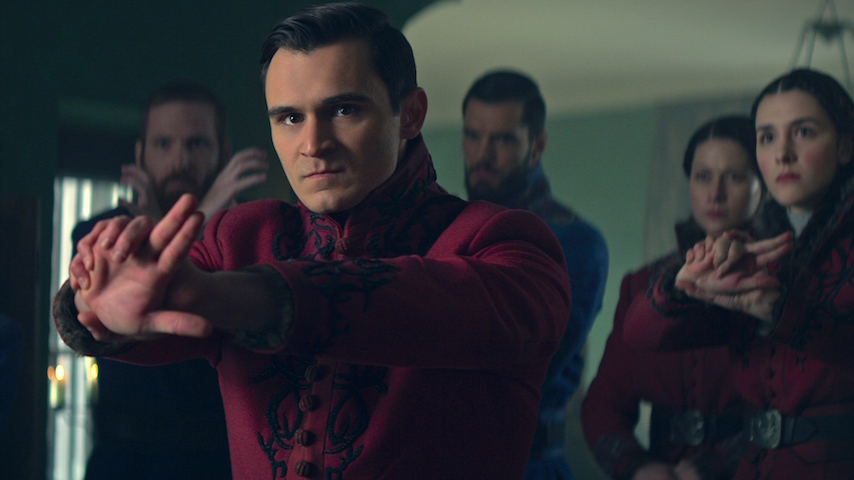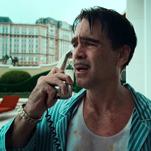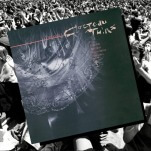4 Ways to Improve Netflix’s Shadow and Bone for Season 2
Photo Courtesy of Netflix
Netflix’s Shadow and Bone was one of the most anticipated shows of the year among fantasy fans. An adaptation of Leigh Bardugo’s deeply compelling Grishaverse trilogy, the series is set in Ravka, a fictional country based on Russia that is divided by the Shadow Fold, an area of darkness where light cannot penetrate and vicious creatures known as volcra feast on human flesh. The eight-episode first season tells a familiar story common to the YA and fantasy genres: Alina Starkov (Jessie Mei Li), an unassuming orphan at the start of the story, suddenly discovers she is actually quite special. After Alina’s childhood best friend, Mal (Archie Renaux), is nearly killed by a volcra, she learns she is a Grisha—someone with the ability to manipulate matter in its basic form—who can summon and control light. There’s never been anyone like her, so she alone has the ability to fight the forces of darkness that threaten Ravka and its people.
The first season sets the stage for Alina’s journey from nobody to savior, thrusting her into a new world while she must quickly learn to control her exceptionally unique power. While the writers of the show, which was adapted for TV by Eric Heisserer, have made several key changes to Bardugo’s source material that deepen Alina’s story and her close relationship with Mal—like making Alina half Shu (the country of Shu Han stands in for East Asia in the novels)—the series feels rushed and underdeveloped in other ways. For fans of the novels, some of the vividness that made the books so compelling and rich has been flattened and lost in translation. So, in the interest of supporting truly great fantasy programming, here are four ways the show could be improved moving forward.
1. Spin off the Six of Crows characters immediately

In a somewhat baffling move, Netflix chose to combine the personal journey Alina goes on in the Grisha trilogy with the thrilling adventures of the Six of Crows books, which feature new characters but are set in the same universe, and occur after the events of the trilogy. The two narratives have different tones and their storylines don’t have a lot of overlap, which means the writers of the show had to work hard to shoehorn the latter books’ characters into the story of the former. The end result is a TV show that can’t stop getting in its own way. Just when Alina’s emotional story arc starts to build momentum, the action pivots to Kaz’s (Freddie Carter) team of criminals or Nina’s (Danielle Galligan) story with the Grisha-hating Matthias (Calahan Skogman), which is unfortunately never fully explained and feels like a sidequest no one asked for. These false starts make it increasingly hard to immerse oneself in what is, under normal circumstances, an intriguing narrative. And it’s unfair to everyone involved.
There’s plenty of material within the Shadow and Bone novel to build out Alina’s complex world, so while the introduction of the Crows (who are known as the Dregs in the books) and the island of Kerch does help to broaden and deepen this rich fantasy world, it’s ultimately unnecessary. Therefore, it sometimes seems like the Crows are extraneous and were simply included so Netflix could spin them off into the storylines of Six of Crows novels, which are incredibly fun and feature Kaz, Nina, Matthias, Inej (Amita Suman), Jesper (Kit Young), and a young teen known as Wylan (who is not in the show), attempting to break into a heavily fortified palace and fortress known as the Ice Court.
But in a world where we’re still facing down multiple Game of Thrones spinoffs, I’m not sure the Crows needed to be introduced in Shadow and Bone in order to be featured later in their own show. While there is no guarantee viewers will flock to the series the way they did Game of Thrones or even The Witcher, which has already spawned an animated spinoff film and a prequel limited series, the characters are compelling on their own, and one would think keeping a fully developed, built-in spinoff in the back pocket would have been a smarter business move than trying to merge two unrelated narratives into one. Since that didn’t happen though, the next best thing would be to spin them off into the heist narrative of the novels as soon as possible, so both stories can get the attention they deserve without constantly competing with one another for screen time. If that streamlining doesn’t happen, future seasons will only become more convoluted, and we’ll have to wonder why Netflix included the Crows at all.
2. Expand the seasons to 10 or 13 episodes

I am on record complaining about the length of several Netflix shows, including the streaming service’s Marvel series and the young adult drama 13 Reasons Why, so I do see the irony in me complaining about Shadow and Bone being too short now. But I really do think that a show with as complex a mythology as this one would have benefited from a longer season, especially if Netflix insisted on merging two narratives into one.
While the writers clearly spent a great deal of time developing Alina and Mal, the larger story of Ravka, the Grisha, and General Kirigan’s place within the story all feel underdeveloped, with characters making choices that aren’t fully explained and emotional triumphs that don’t feel wholly earned. To the uninitiated who’ve never read the source material, this might not be a big deal—they don’t know what they’re missing—but it risks leaving a lot of emotion and depth on the table. So, moving forward, an extended season of 10 or potentially even 13 episodes would be better. It would offer more time for the writers to dig into this complex world and its history, as well as its multi-layered characters and what motivates them. Because without giving too much away to non-book readers, there is at least one fan-favorite character from the novels who hasn’t yet been introduced who deserves far better than what happened to some of the characters in Season 1. And this ultimately brings me to the next two items on this list…
3. Spend more time with the Grisha and lean more into the “small science” of it all

This is something that should have been done in the first season when Alina first traveled to the Little Palace and met other Grisha like Marie (Jasmine Blackborow) and Zoya (Sujaya Dasgupta), who were also training to be part of the Second Army. Instead, the Grisha mythology was limited to some offhand comments that viewers had to really be paying attention to in order to fully comprehend. And even then, it’s possible some of it went over their heads.
One of the major throughlines of both the Grishaverse trilogy and the Six of Crows duology is the treatment of Grisha, the limits of their abilities—which are not magical powers but something known as “small science”—and the lengths some people will go to extend that limit at any cost. The Grisha and their story are at the heart of the narrative, and yet Shadow and Bone barely spends time on them as a people outside of Alina’s unique ability to summon sunlight. While no one wants to be drowned in exposition, in order to fully develop Alina’s world and make the mythology as enthralling on TV as it was on the page, the show would benefit from spending even a little bit more time with the many different Grisha—Corporalki, Etherealki, and Materialki—and explaining their abilities, which the show honestly just treats like magic. The fact Alina immediately discards the mirrored gloves that were made for her so she could better manipulate light is disappointing in this regard. And this is only going to get more complicated as the story evolves; a firm understanding of the Grisha and what “small science” actually entails is key to understanding the rest of Alina’s story.
4. Further develop the Darkling, a.k.a General Kirigan

Perhaps one of the most egregious mistakes the writers of Shadow and Bone made was to give the Darkling (a perfectly-cast Ben Barnes) the name General Kirigan. (They claimed the Darkling was too silly of a name, as if Voldemort didn’t already exist in popular culture.) Not only does this undermine the point the novels attempt to make about him only being known by his title rather than a name and what that eventually does to him, but it strips the meaning from the moment the Darkling tells Alina his real name while also removing some of the mystery that surrounds the character. This ultimately plays into a much bigger problem, which is that the character is largely one-dimensional.
The reveal near the middle of the season that Kirigan is not a descendant of the Black Heretic but the same man who created the Shadow Fold feels more like a “Well, duh!” moment than it arguably should. The show’s version of the character is a more cut-and-dried, mustache-twirling villain than the person on the page, who is a deeply complicated man with complex desires for Ravka and Grisha everywhere. In the series, his relationship with Alina never feels genuine, which means his eventual betrayal has little emotional impact on both Alina and the viewers. By spending more time with Kirigan and giving viewers more honest insight into the character and his motivations, he would become more multi-dimensional and therefore a better antagonist, strengthening the overall story.
The bones for a great fantasy show unlike what we’ve seen before are all there. The writers just need to do the extra work to elevate the program to the next level. Hopefully Netflix will give it a chance to do so.
All 8 episodes of Shadow and Bone are currently streaming on Netflix.
Kaitlin Thomas is an entertainment journalist and TV critic. Her work has appeared in TV Guide, Salon, and TV.com, among other places. You can find her tweets about TV, sports, and Walton Goggins @thekaitling or read more of her work at kaitlinthomas.com.
For all the latest TV news, reviews, lists and features, follow @Paste_TV.







































